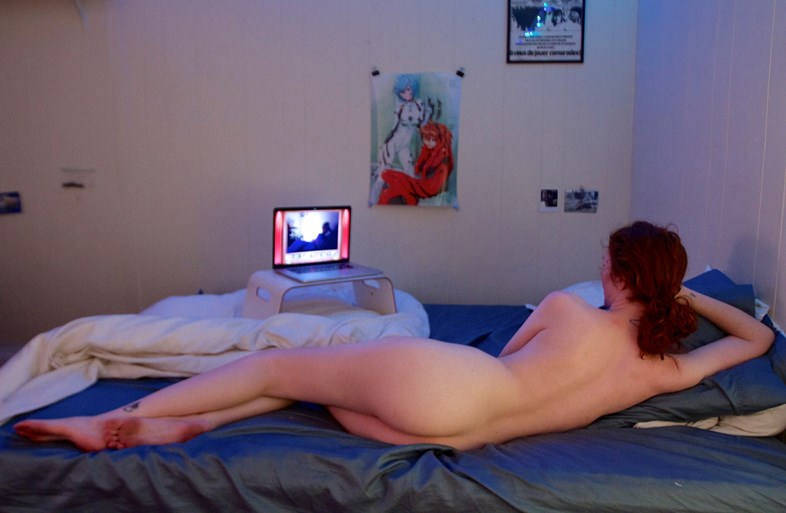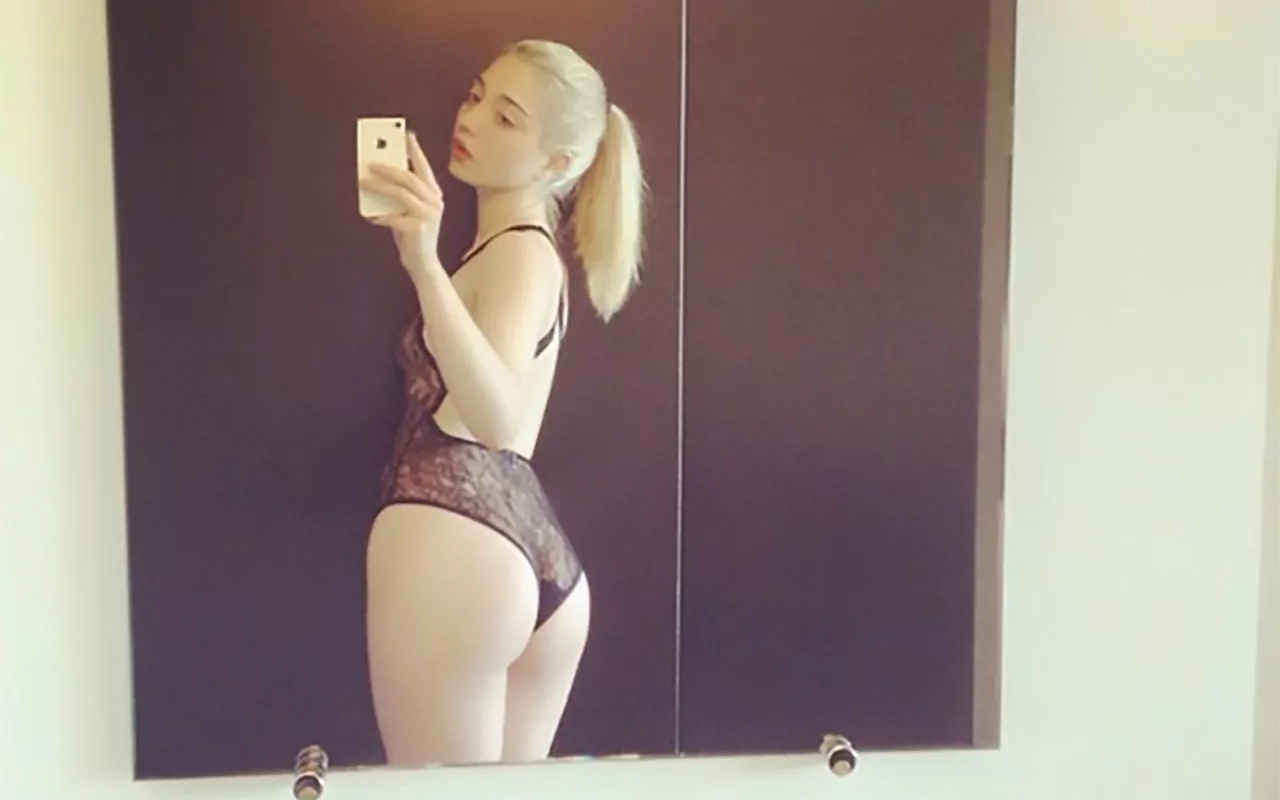The female performer acts as characters in this nonsensical interaction with the void, creating an ambiguous relationship with the viewer, the camera and the facades she creates.
I used ‘costumes’ to display my own interpretations of Freud's model of the psyche, with structures known as the id, the Ego and the Superego. Fabricating online identities and existing IRL make interesting use of this model. We have always created a face we show to the world, however through the use of the internet our Egos have become more curated and perfected, to such a degree that they’re no longer a part of us. Usernames are created from a need to define our own selves online, rather than allowing ourselves to exist passively.
First there is the Ego, the one wearing the striped shirt, who represents the ideal female performer. She is empty and kind, she shows off her face at flattering angles and accommodates for the viewer. This character is bending, forcing, pushing and breaking herself into the mould and is enforcing these ideas on an audience.
The Superego, wearing a mask, the one who doesn’t want to perform, but does in her revolt. She is projecting idealistic views of how women should fight against performing for the world, but still associates with the camera. Therefore, she appears in some kind of struggle against being active and passive with her actions and words.
The third identity, the id, does not perform. She isn’t bound to a costume and she doesn’t act for the camera. To her, the camera represents a voyeur and she doesn’t wish to be involved.
In all three acts, the camera represents the void, which I compare to the internet. The internet is an intangible object. The internet takes an input and spews out and output from all the material and information it contains. The Ego considers the void, answers to it and makes her input via the video. The information becomes muddled, crowded and confusing.
In terms of aesthetics, I wanted the video to appear quite lo-fi, while seeming overly edited and over-stimulating by showing overlaying clips and images.
Molly Soda is an artist that makes some similar kinds of observations about the female identity as I have in my work. She uses her webcam to show herself in explicit loneliness, while she sings, cries and relaxes in her room. Soda is intimate with the viewer while creating distance by showing herself as an ‘online girl’, as if she’s not real, because of their performative nature.
Artists Audrey Wollen and Amalia Ulman give the same impressions about girls online and their calculated, formulated appearances and identities, Ulman even states ‘being a woman is not a natural thing’. Wollen has made many comments on how Instagram has pushed women to create brands from their own selfies and the repetition of their image.
Molly Soda: http://mollysoda.exposed/
Audrey Wollen: http://audreywollen.berta.me/
Amalia Ulman: http://amaliaulman.eu/













































































